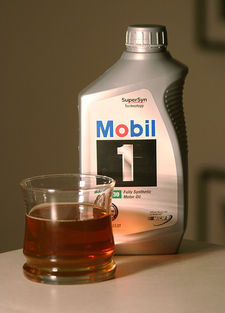 Changing a car’s motor oil is a periodically process. The process is simple, but many people choose to pay others to perform this task. However, if you like to do it on your own, perhaps some tips here can assist you.
Changing a car’s motor oil is a periodically process. The process is simple, but many people choose to pay others to perform this task. However, if you like to do it on your own, perhaps some tips here can assist you.
a. Before changing your car oil, start your car engine and keep it running for at least 10 minutes before beginning to drain the oil. Then move your car to your working area and assemble all the needed equipment.
b. Make sure your car park properly. Jack up your car and make sure that it is properly supported. Safety precautions are important. If only the front wheels are being raised, place a brick behind the two back wheels.
c. Be sure the jack is resting on a flat cement surface since any other surface may not properly support the weight of the car.
d. Find out the drain plug. If you are not sure, consult your car manual. It is generally near the centre underside of the car close to the front.
e. Place the oil drain pan under the drain plug before opening the plug. Using a socket wrench, loosen the plug with a counter clockwise motion. When loose, remove the plug, remembering that there may be a flood of hot oil when the drain is opened.
f. Allow all the oil to drain out and clean the drain plug and plug opening with a rag. Replace the drain plug gasket, if needed, and replace the plug by hand first and then tighten with a wrench. Do not over tighten since this could strip threads in the plug opening, causing an oil leak.
g. Locate the old oil filter, usually on the side of the engine, and use oil filter wrench to remove the old filter. Check the seal of the filter and add a thin film of new oil to coat the seal. Install the new filter and tighten by hand.
h. After work is finished underneath the car, open the hood and remove the oil filter cap on top of the engine. Insert the funnel into the opening. Pour in new oil in the required amount, according to the car manual. Replace cap and wipe up any excess or spillage with rag.
i. Start car and let the motor run for a few minutes. Then check the oil level with the dipstick and add more oil if needed.
j. Check for leakage around the oil drain plug and around the new filter. If leakage is present, tighten until no spillage appears. Note that if you find you have to repeatedly add oil to maintain the required level, this indicates that there is a leak. This could mean very expensive repairs or a ruined engine if ignored. Oil leaks will not seal themselves and should be attended to as soon as they are discovered.
k. Put old oil and oil filter into a container with a lid and dispose of them at a recycling facility. Do not dispose of them in any type of rain or by putting into regular trash receptacles.